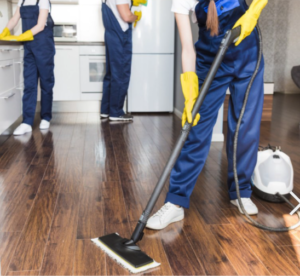Don’t Fail on the Follow-Through
UTILIZE ATP TESTING IN YOUR BUILDING
 For the past several months, cleanliness has taken on a whole new level of importance. Beyond the value of hygiene, during the COVID-19 pandemic, your building’s cleanliness may literally be a matter of life or death. Building owners and property managers are responsible for acting quickly if they learn that someone who has been in their building recently tested positive for COVID-19. Fortunately, during this crisis most building management teams have been taking the appropriate steps to keep their buildings sanitized by calling in contractors to clean the space. However, as Travis addressed in this month’s cover article, few people are taking the next step by following up with testing to ensure the space was cleaned correctly.
For the past several months, cleanliness has taken on a whole new level of importance. Beyond the value of hygiene, during the COVID-19 pandemic, your building’s cleanliness may literally be a matter of life or death. Building owners and property managers are responsible for acting quickly if they learn that someone who has been in their building recently tested positive for COVID-19. Fortunately, during this crisis most building management teams have been taking the appropriate steps to keep their buildings sanitized by calling in contractors to clean the space. However, as Travis addressed in this month’s cover article, few people are taking the next step by following up with testing to ensure the space was cleaned correctly.
If you’ve brought a cleaning crew into your building to sanitize the area after a case of COVID-19, then it is vital that you then follow up with adenosine triphosphate (ATP) tests. While there currently is no specific environmental surface test designed to identify the presence of COVID-19, experts agree that ATP testing is a reasonable alternative for evaluating a successful cleaning process. ATP is an organic compound present in all living tissue. By checking for the presence of this compound, ATP testing devices are able to detect bacteria and other microorganisms left on a surface. This is a tool designed to help people ensure that buildings were cleaned properly. If the cleaning process was done appropriately, then there should be very few traces of bacteria left. Those kind of results also imply that the virus levels will also be low or nil.
After a contractor finishes cleaning a space, ATP testing should be conducted. Several surfaces should be swabbed, including desks, telephones, printers, keyboards, desk chairs, and other objects people put their hands on regularly. Each of these swabs are inserted into the ATP machine, which runs a chemical reaction on the sample. ATP devices use relative light units (RLU) to measure ATP. The lower the RLU, the cleaner the surface.
Hospitals, schools, and food-related businesses and organizations regularly use ATP testing to ensure their buildings meet appropriate cleanliness standards. The industry standard for cleanliness in hospitals is 250 RLU. If the surfaces in your building are at or below this level, then you can be reasonably confident that your building is free of the COVID-19 virus. However, you cannot know for sure unless ATP testing is conducted immediately following the cleaning process.
Even the most experienced cleaners can make a mistake and fall victim to human error.
Ask your contractor if they are following up on their work with ATP testing, If the answer is no, then we recommend building owners and property managers insist on the testing. Owners can also hire consultants trained to conduct ATP testing to come in and double-check the work of the cleaning crew. You cannot risk the liability of a COVID-19 outbreak in your building if the cleaning process was not conducted appropriately.
